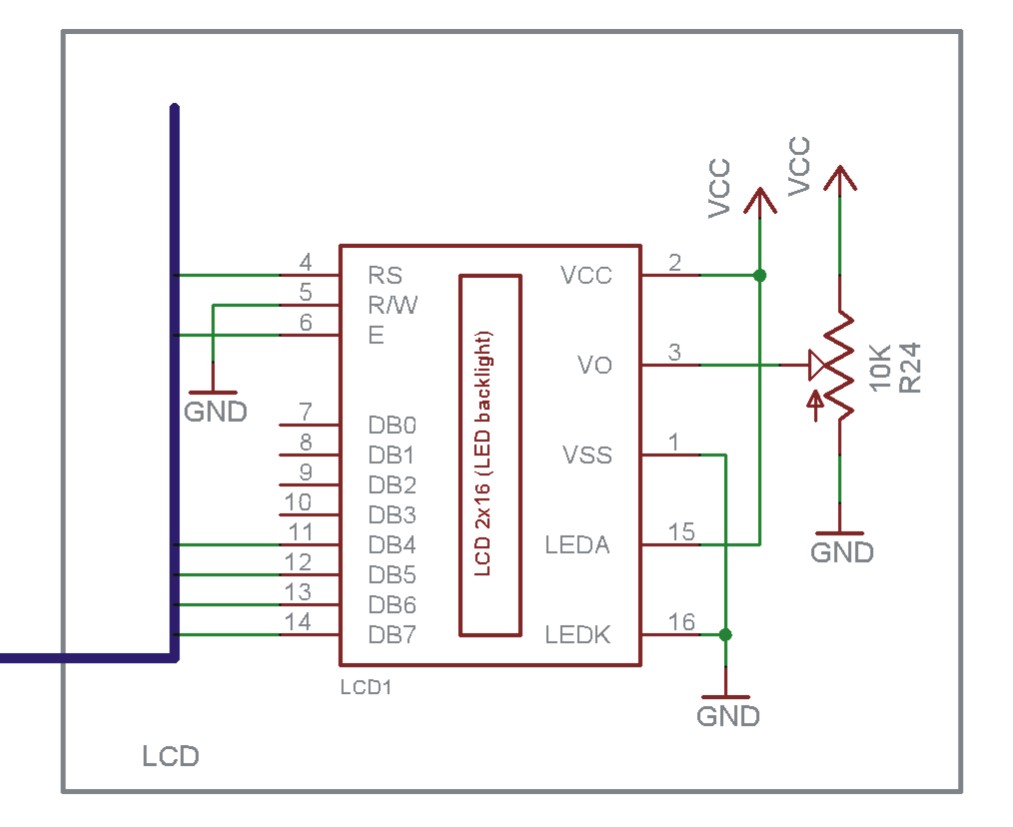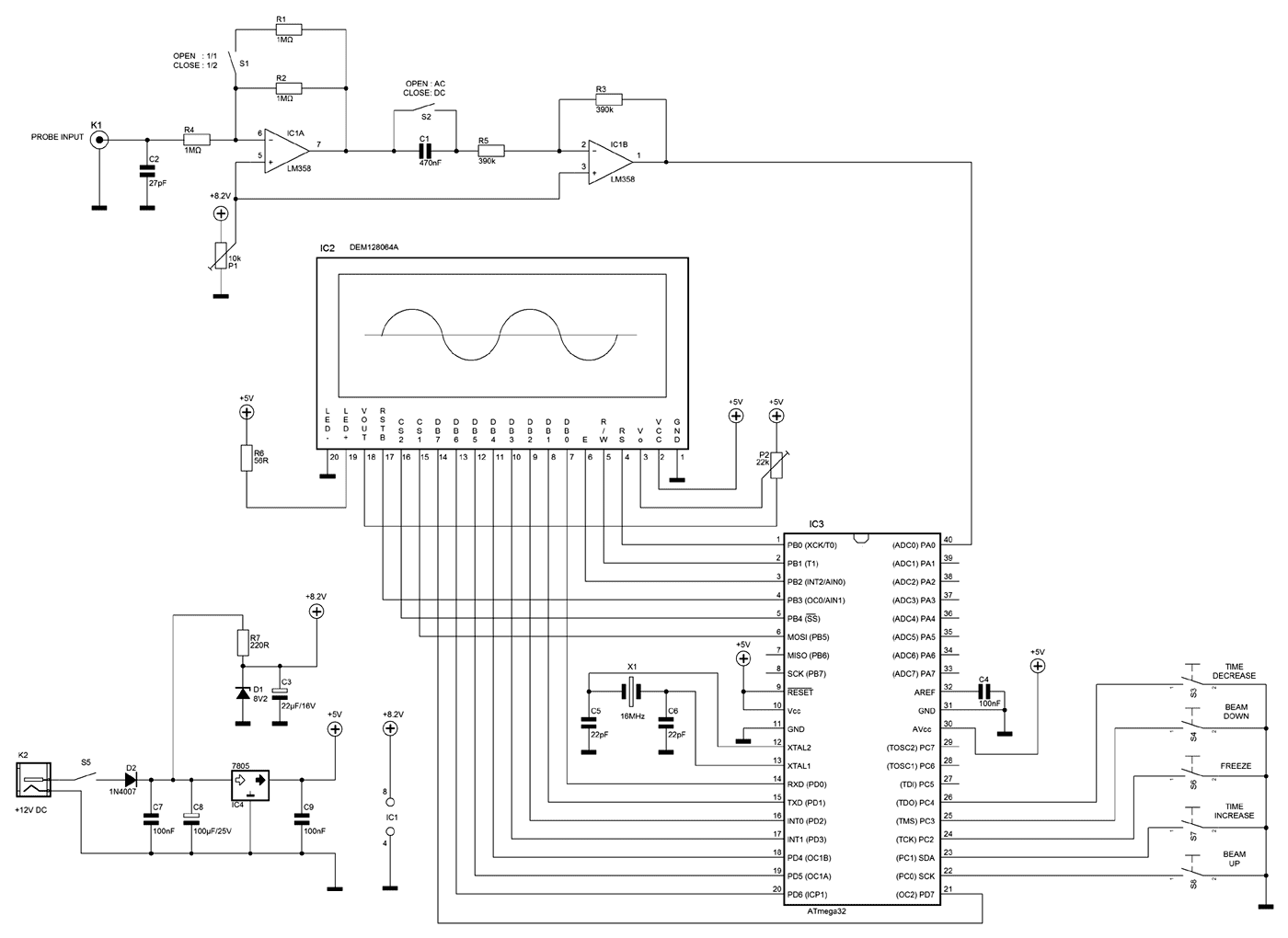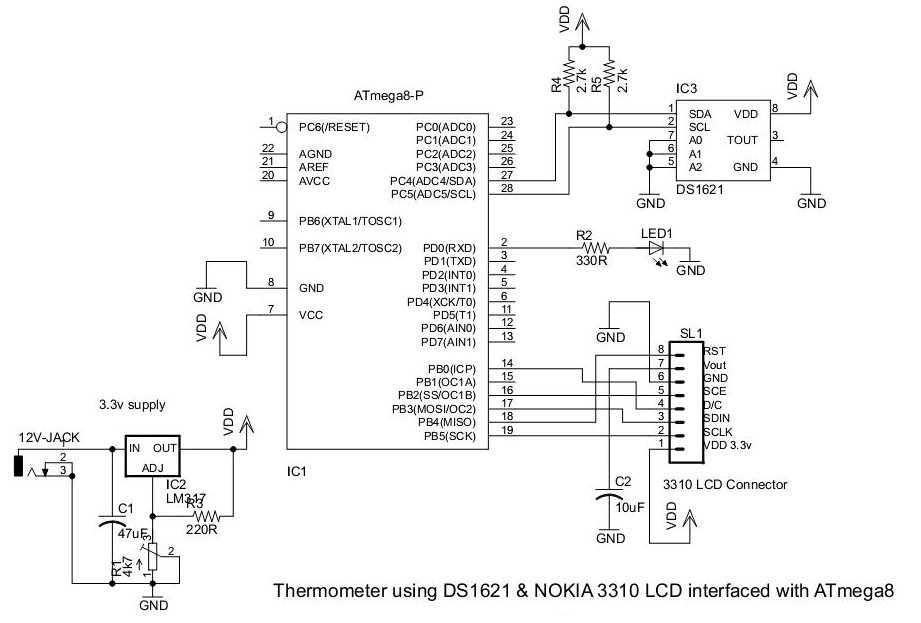
interfacing lcd

The EN line is referred to as 'Enable'. This control line is utilized to indicate to the LCD that data is being sent. To transmit data to the LCD, the program must ensure that this line is low (0), then configure the other two control lines and/or place data on the data bus. Once the other lines are fully prepared, the EN line should be brought high (1) and held for a minimum duration (approximately 200 ns) before returning it to low (0). The RS line is known as the 'Register Select' line. When RS is low (0), the data is interpreted as a command or special instruction (such as clearing the screen or positioning the cursor). Conversely, when RS is high (1), the data being sent is text data intended for display on the screen. For instance, to display the letter 'T', RS should be set high (1). The RW line serves as the 'Read/Write' control line. When RW is low (0), the data on the data bus is being written to the LCD. When RW is high (1), the program is reading from the LCD. All commands are write commands except for one ('Get LCD status'), which is a read command. Therefore, RW will predominantly be low. The LCD can operate in either 8-bit parallel mode, where the entire 8-bit data is sent simultaneously, or in 4-bit mode, where the 8-bit data is divided into packets of 4 bits and sent sequentially (first the higher 4 bits, followed by the lower 4 bits). The 4-bit mode simplifies the circuit. Before utilizing the LCD, it must be initialized and configured by sending a series of initialization instructions. The first instruction must indicate to the LCD that communication will occur using a 4-bit data bus (4-bit mode). Additionally, a 5x8 dot character font must be selected. These two options are set by sending the command 20h (where 'h' signifies hexadecimal format) to the LCD as a command. The first byte of the initialization sequence has now been sent. The second byte of the initialization sequence is the instruction 0Fh, which instructs the LCD to 'Display on, Cursor Blinking'.
The LCD (Liquid Crystal Display) operates based on specific control lines that dictate its behavior during data transmission. The Enable (EN) line is critical for signaling the LCD to process incoming data. The sequence begins with the EN line set low (0), indicating that the LCD is ready to receive data. After configuring the Register Select (RS) and Read/Write (RW) lines, the EN line is brought high (1) for a brief period (approximately 200 ns), allowing the LCD to latch the data before being returned to low (0).
The RS line determines the nature of the data being sent. When RS is low (0), the data is interpreted as a command, which could include operations like clearing the display or moving the cursor. When RS is high (1), the data represents characters that are to be displayed. This distinction is essential for proper communication with the LCD, as it dictates how the LCD interprets the incoming signals.
The RW line indicates the direction of data flow. A low (0) state signifies that data is being written to the LCD, while a high (1) state indicates that the LCD is being read. Most operations will involve writing commands to the LCD, with the RW line predominantly remaining low.
The LCD can function in two modes: 8-bit parallel mode and 4-bit mode. In 8-bit mode, a full byte of data is transmitted simultaneously, allowing for fast data transfer. Alternatively, in 4-bit mode, the data is divided into two packets of 4 bits, which can simplify the circuit design and reduce the number of required connections. The higher 4 bits are sent first, followed by the lower 4 bits.
Before the LCD can be used, it must undergo an initialization process. This involves sending specific commands to configure the display for operation. The first command sent should indicate that the data bus will operate in 4-bit mode, along with the selection of a 5x8 dot character font. This is accomplished by transmitting the hexadecimal command 20h. Following this, the command 0Fh is sent to enable the display and activate the cursor blinking feature, completing the initial setup for the LCD. Proper initialization is crucial for ensuring that the LCD functions correctly and displays the intended data.The EN line is called `Enable`. This control line is used to tell the LCD that you are sending it data. To send the data to the LCD, your program should make sure this line is low (0) and then set the other two control lines and/or put data on the data bus. When the other lines are completely ready, bring EN high (1) and wait for the minimum amoun t of time required ( about 200ns), and end by bringing it low(0) again. The RS line is the `Register Select` line. When RS is low(0), the data is to be treated as a command or special instruction (such as clear screen, position cursor, etc. ). When RS is high (1), the data being sent is text data which should be displayed on the screen. For example, to display the letter `T` on the screen you would set RS high(1). The RW line is the `Read/Write` control line. When RW is low (0), the information on the data bus is being written to the LCD. When RW is high (1), the program is effectively querying (or reading) the LCD. All commands are write commands except for 1 (`Get LCD status`), which is a read command. Thus, RW will almost always be low. The LCD can work in either 8 bit parallel mode, i. e, then entire 8 bit data can be sent at once, or it can be used in 4 bit mode. In 4 bit mode the 8 bit data is broken into packets of 4 bit data and sent (higher 4 bits first, then lower 4 bits).
4 bit mode simplifies the circuit. Before you may really use the LCD, you must initialize and configure it. This isaccomplishedby sending a number of initialization instructions to the LCD. The first instruction we send must tell the LCD we`ll be communicating with it with a 4-bit data bus (4-bit mode). We also need to select a 5x8 dot character font. These two options are selected by sending the command 20h ( `h` denotes hexadecimal format) to the LCD as a command.
We`ve now sent the first byte of the initialization sequence. The second byte of the initialization sequence is the instruction 0Fh. This commmand is sent to instruct the the LCD to, `Display on, Cursor Blinking`. 🔗 External reference
The LCD (Liquid Crystal Display) operates based on specific control lines that dictate its behavior during data transmission. The Enable (EN) line is critical for signaling the LCD to process incoming data. The sequence begins with the EN line set low (0), indicating that the LCD is ready to receive data. After configuring the Register Select (RS) and Read/Write (RW) lines, the EN line is brought high (1) for a brief period (approximately 200 ns), allowing the LCD to latch the data before being returned to low (0).
The RS line determines the nature of the data being sent. When RS is low (0), the data is interpreted as a command, which could include operations like clearing the display or moving the cursor. When RS is high (1), the data represents characters that are to be displayed. This distinction is essential for proper communication with the LCD, as it dictates how the LCD interprets the incoming signals.
The RW line indicates the direction of data flow. A low (0) state signifies that data is being written to the LCD, while a high (1) state indicates that the LCD is being read. Most operations will involve writing commands to the LCD, with the RW line predominantly remaining low.
The LCD can function in two modes: 8-bit parallel mode and 4-bit mode. In 8-bit mode, a full byte of data is transmitted simultaneously, allowing for fast data transfer. Alternatively, in 4-bit mode, the data is divided into two packets of 4 bits, which can simplify the circuit design and reduce the number of required connections. The higher 4 bits are sent first, followed by the lower 4 bits.
Before the LCD can be used, it must undergo an initialization process. This involves sending specific commands to configure the display for operation. The first command sent should indicate that the data bus will operate in 4-bit mode, along with the selection of a 5x8 dot character font. This is accomplished by transmitting the hexadecimal command 20h. Following this, the command 0Fh is sent to enable the display and activate the cursor blinking feature, completing the initial setup for the LCD. Proper initialization is crucial for ensuring that the LCD functions correctly and displays the intended data.The EN line is called `Enable`. This control line is used to tell the LCD that you are sending it data. To send the data to the LCD, your program should make sure this line is low (0) and then set the other two control lines and/or put data on the data bus. When the other lines are completely ready, bring EN high (1) and wait for the minimum amoun t of time required ( about 200ns), and end by bringing it low(0) again. The RS line is the `Register Select` line. When RS is low(0), the data is to be treated as a command or special instruction (such as clear screen, position cursor, etc. ). When RS is high (1), the data being sent is text data which should be displayed on the screen. For example, to display the letter `T` on the screen you would set RS high(1). The RW line is the `Read/Write` control line. When RW is low (0), the information on the data bus is being written to the LCD. When RW is high (1), the program is effectively querying (or reading) the LCD. All commands are write commands except for 1 (`Get LCD status`), which is a read command. Thus, RW will almost always be low. The LCD can work in either 8 bit parallel mode, i. e, then entire 8 bit data can be sent at once, or it can be used in 4 bit mode. In 4 bit mode the 8 bit data is broken into packets of 4 bit data and sent (higher 4 bits first, then lower 4 bits).
4 bit mode simplifies the circuit. Before you may really use the LCD, you must initialize and configure it. This isaccomplishedby sending a number of initialization instructions to the LCD. The first instruction we send must tell the LCD we`ll be communicating with it with a 4-bit data bus (4-bit mode). We also need to select a 5x8 dot character font. These two options are selected by sending the command 20h ( `h` denotes hexadecimal format) to the LCD as a command.
We`ve now sent the first byte of the initialization sequence. The second byte of the initialization sequence is the instruction 0Fh. This commmand is sent to instruct the the LCD to, `Display on, Cursor Blinking`. 🔗 External reference





